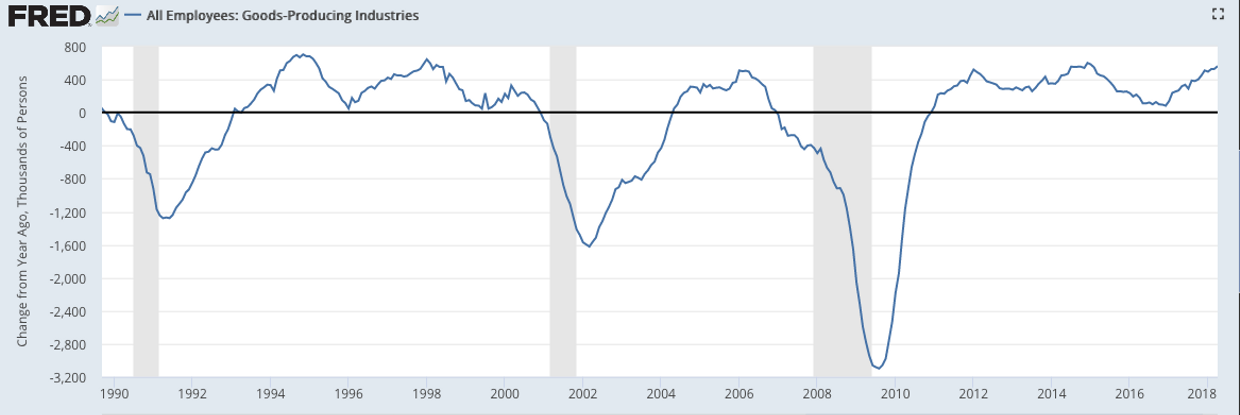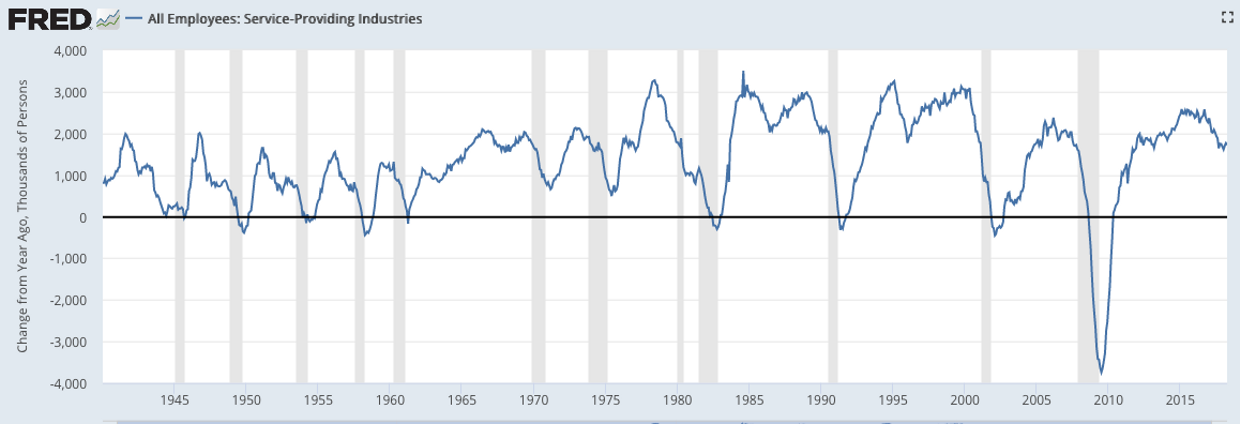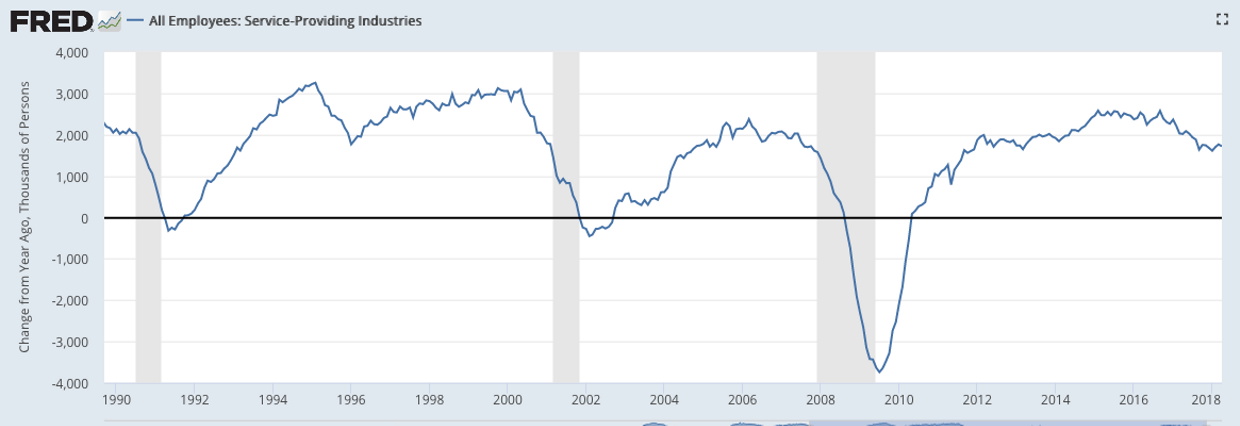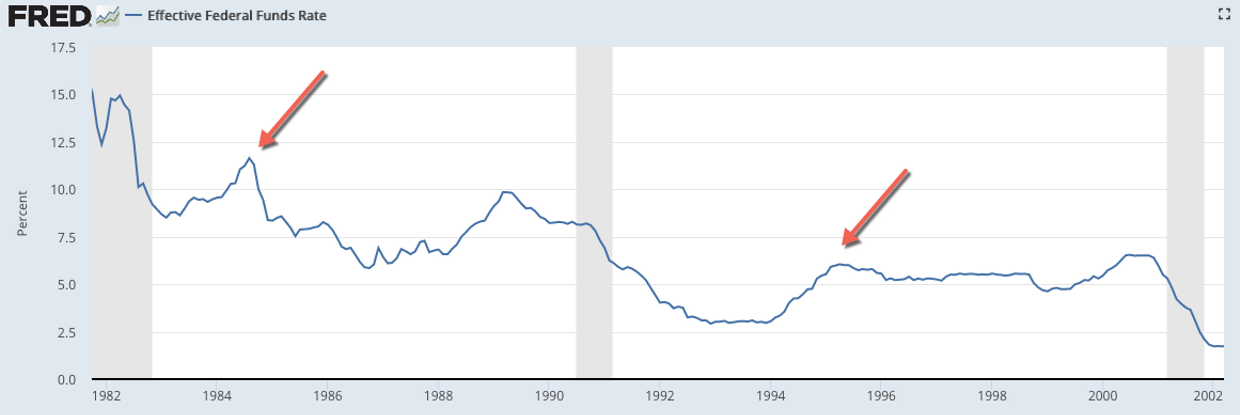Note: This post first appeared on Patreon on 30 May 2018
After I wrote the last post, Kent Willard made a really good comment about service sector jobs versus goods-producing jobs that I want to expand upon. He said “there’s a growing divergence between service job growth and goods producing job growth”. And I think this is a bad sign given the fact that the service sector produces so many more jobs than the goods-producing industries.
Here’s what the charts look like. First, here’s the goods-producing job growth. We’re looking at the rolling 12-month jobs added to the economy in those sectors.

Notice how the amplitude of the curve has gone way down. That’s because manufacturing is less important But also notice that the amplitude on the plus side is down much further than on the minus side. When recessions hit, goods-producing industries hemorrhage jobs. And that was particularly true in the last downturn.
If we zoom in on the last few business cycles, we can see the recent numbers better. The number of jobs getting added to the economy has been pretty good over the past year. And the number is still rising.

Now take a look at service sector jobs. We’re still looking at the rolling year-on-year change here.

The scale is exactly the same. But you can see the amplitude of the curves keeps rising as service jobs come to dominate the economy.
Notice the massive job loss in the last recession. That’s a complete outlier. Nowhere else in US modern history has there been a large net loss in service sector jobs over a full 12-month period – not even at the depths of the worst recessions.
My first thought in seeing this is to conclude that this is unlikely to repeat since it is an outlier. But I will need to do a little research to understand why the service sector job loss was so large in the last recession.
Now, if we zoom in on the last few business cycles we can see the number peaking in September 2016.

That’s almost two years ago.
Now if you look at the full data chart, you can see that service sector jobs used to peak mid-cycle and then decline into recession. In the 1980s and 1990s business cycles, we got twin peaks, with the net job add peaking, falling back and then peaking again before heading into recession.
I believe monetary policy was the key factor in both cases. The Fed stopped an early rate hike train and gave the economy breathing room. We had mid-cycle pauses in both cases as job growth soon began to climb again.

This cycle, the only mid-cycle pause we had was the result of the shale oil bust and that was in the goods-producing sector. And it wasn’t precipitated by monetary tightening. So we don’t see the impact in service sector job growth.
The conclusion then has to be that we are in an end of cycle decline in service sector job growth that will not stop until we hit a recession. My expectation, therefore, as the Fed continues to hike rates is that service sector job growth will deteriorate. And eventually this will feed through into lower consumption, higher consumer defaults and, eventually, recession.
Since service sector job growth peaked a full 20 months ago, I don’t expect this to play out for more than a year and a half longer, meaning that 2019 is when we should expect this trend to result in recession.
Comments are closed.